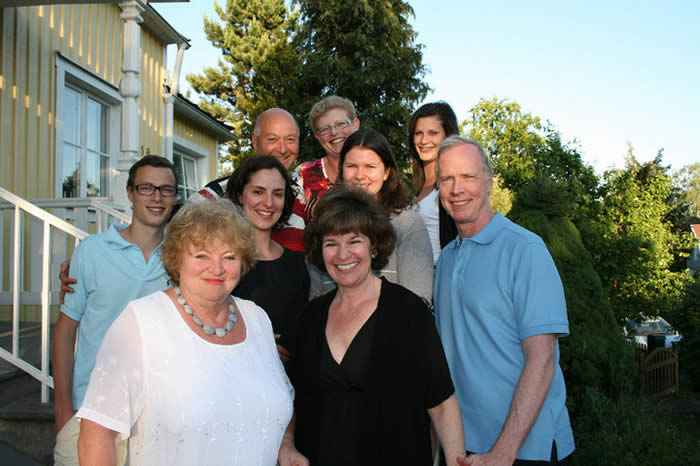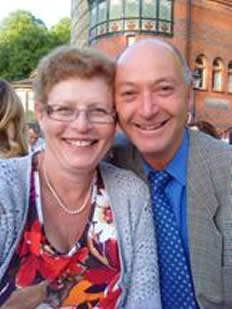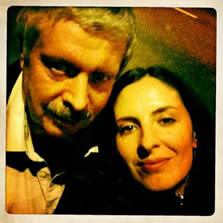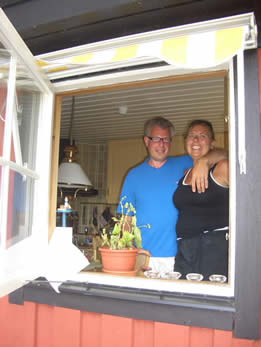|
A
Story of Hope for Holocaust Survivors
The
Galas family of Jezow owned a farm and a hardware store in the
center of town. My grandfather, Icek Majer Galas, had eight
children. He and his oldest son, Israel Mordka, ran the
local hardware store. Two sons, my grandfather Abram Michal
and his brother Jacob Noech were leather tanners, and when
they moved to Lodz in the early part of the 1900s, they became
leather wholesalers.
My
grandfather Abram Michal prospered in the big city. He married
my grandmother Hinda Dworja Dobrzynska, and they lived in a
beautiful section of Lodz near Liberty Square with their seven
children. My mother was their middle child. The family's
comfortable lifestyle made them early targets of the Nazis.
Forced out of their home on Pomorska Street, my mother and her
middle brother and parents went into the Lodz Ghetto in 1940.
Two of my mother's
brothers left Lodz in 1939 before the Ghetto was sealed. The
oldest sister who was married died with her infant son in a
street action in Brzesko (near Kracow) in the summer of
1942. A sister and brother who left for the safety of
Krakow most likely died in the gas chambers of Belzec. My
mother's middle brother stayed in the Lodz Ghetto with her and
their parents until he was deported to Skarzysko-Kamienna labor
camp, then Czestohowa labor camp, then Buchenwald, then
Theresienstadt, never to be heard of again.
On August 7th, 1944, my
mother and her parents were deported to Auschwitz, where my
grandparents were immedIately sent to the gas chambers.
My mother survived four years of the
Lodz Ghetto, then Auschwitz, Bergen-Belsen, Salzwedel, as well
as the murder of her parents, and brothers and sisters.
We never knew the exact number of her aunts, uncles, cousins
and other family members who perished in the Shoah. Up until
her death in 2008, my mother believed that she was the sole
survivor of the Galas family.
No matter--my mother never gave up
hope that someone would be looking for her. Before she
left for the United States in 1946, she left contact
information with the Red Cross. Later, she made
international inquiries through lawyers. She reported
her address and name changes to various Holocaust survivor
registries and dutifully filled out the forms with Yad Vashem.
Anywhere and everywhere another family member could be looking
for her, my mother left contact information. As the Internet
grew, I too began replicating my mother’s work and filed
electronic notices and searched databases for missing family
members.
In the 1970s, my mother found two
second cousins from her mother’s side living in Israel.
Through a series of improbable coincidences, they read an ad
in a Yiddish newspaper looking for relatives of Abram Galas.
My mother’s cousins, Abram and Henoch Dobrzynski, ran
away to the Russian border before the Lodz Ghetto was
sealed. Imagine my mother’s unbearable joy at finding
these two cousins! Imagine finding someone who
remembered and shared a common past!
Over the subsequent three decades,
hope faded that any more relatives would be found. Too much
time had passed. But though my mother’s mental faculties
diminished in her last years, she never forgot her brothers
and sisters, and more and more, she began to call me by her
sister’s names.
With my mother’s passing, my search
became even more pressing. My mother’s generation of
survivors was dying, and if there were any family members
left, soon they too would pass away. Starting in January,
2009, my work started to pay off, little by little. By
searching Jewishgen databases, I found two photos of my
mother’s youngest brother and of her second oldest sister in
files from the Cracow Ghetto. In June, I acquired the
Lodz Ghetto work card of my mother’s oldest brother,
accompanied by a photo. What my mother would have done to see
these only existing family photographs of her beloved
siblings!
These treasures compelled me to take a
journey this past July that I had dreamed of my entire life—to
walk in the footsteps of my parents and see their ancestral
villages. On my mother’s side of the family tree, that
journey brought me to Jezow, Ujadz and Lodz to see how the
Galas family lived, and ultimately, how they died. It was a
bittersweet, transformative journey.
Shortly after returning from this
experience, I took one more trip—this one a little closer to
home—Philadelphia--for the International Jewish Genealogy
Societies annual conference. I went there to learn, to
meet some experts, and to talk to people with common
interests. I had no expectations about finding any
specific information about my family.
During the last day of the conference,
I had an opportunity to meet with Megan Lewis and Jo-Ellen
Decker of the United States Holocaust Memorial Museum
(USHMM). Megan and her colleagues have always been
helpful to me. It was Megan who sent me a Lodz Ghetto ID card
displaying a photograph of my mother's beloved oldest brother,
Menachim Jehuda Galas.
At
the conference, I asked Megan to look in her database to see
if I had overlooked anything in the USHMM database about the
fate of the last two Galas brothers. While Megan scrolled
through the list of Galas names, she showed me a record which
confirmed information about my great-uncle Jacob who had died
in a death camp. And then…a shocking discovery: Megan showed
me that Jacob's record reflected that two individuals had
memorialized Jacob's name on a wall at the Stockholm Holocaust
Memorial. Someone had survived the war after all!
These two individuals were my mother’s
first cousins who survived the Shoah, and after the war,
emigrated to Sweden. I received this incredible thrilling news
Friday, the last day of the conference.
I flew home, and over the
weekend, I contacted the Stockholm Memorial Foundation, Yad
Vashem, and everyone in the universe I knew who could possibly
help me, including subscribers to various listservs.
On Monday, a Jewishgen subscriber and
economics professor in Sweden, Henry Ohlsson, contacted me
after he made the effort to go to the Uppsala Tax Office to
gather information on my surviving Galas family members. He
gently gave me the sad news that my mother’s first cousins had
passed away since putting their father’s name on the memorial
wall. But later in the day, he emailed me with more
hopeful news: estate reports (or estate inventories) listed
the direct heirs, my second cousins.
Within five days of Megan’s
revelation, I made contact with my newly-found Swedish
relatives, my second cousins, in a tearful, bittersweet,
and ultimately joyous phone call.
I know that some of the readers of
this website are likely to be children of survivors, as I am.
While it is with sadness that I acknowledge that my mother did
not live to experience this reunion, finding my new
family is a reminder to me that miracles happen, that
strangers can be generous and kind, and that--even after
decades of searching-- hope does not die.

Joyous
reunion in Sweden 2010
Compiled
by Deborah H Long
Updated
2022
Copyright © 2010-2022 Deborah
H Long
|
![]()






